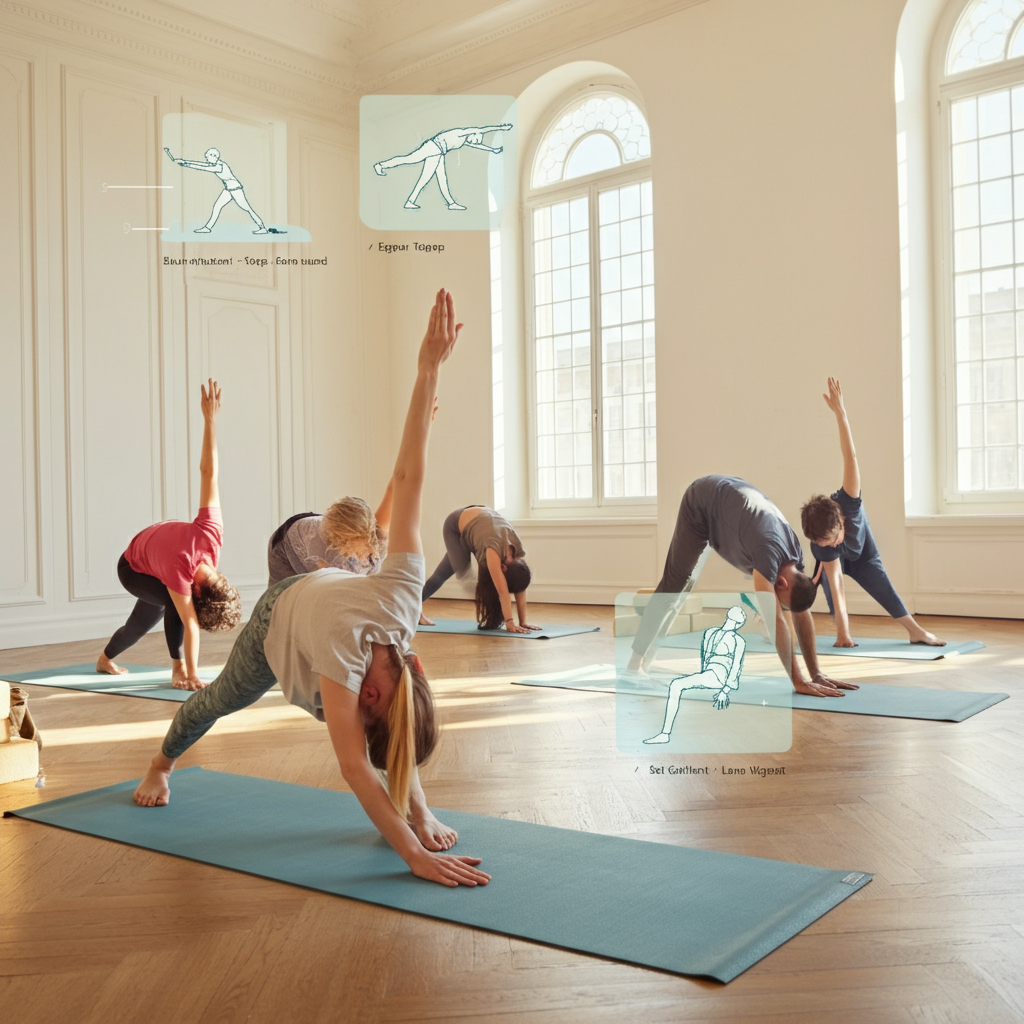Yoga for Beginners Made Easy
Start your yoga journey today with simple poses, routines, and expert tips to achieve balance, strength, and peace of mind.
Introduction to Yoga for Beginners
Yoga has been embraced by millions around the world as a holistic practice to enhance physical health, mental clarity, and emotional well-being. Originating in ancient India, yoga combines postures (asanas), breathing techniques (pranayama), and meditation for a mind-body-soul connection.
The best part? Yoga is for everyone! Whether you’re young or old, flexible or not, yoga meets you where you are. If you’ve been curious about starting yoga but feel overwhelmed by advanced, Instagram-worthy poses, you’ve come to the right place. This beginner-friendly yoga guide is designed to simplify the practice and help you ease into your yoga routine at your own pace.
Here’s what you’ll find in this guide:
- Beginner poses explained step-by-step
- How to create a manageable routine
- Tips for staying motivated and consistent
- Common mistakes to avoid and FAQs answered
By the end of this guide, you’ll feel empowered to roll out your yoga mat with confidence.
Essential Yoga Poses for Beginners
The foundation of yoga starts with learning fundamental poses for strength, flexibility, and balance. Here are some easy yoga poses explained step-by-step to get you started.
Mountain Pose (Tadasana)
- How to do it:
- Stand tall with your feet together.
- Keep your arms relaxed at your sides with palms facing forward.
- Engage your core, lift your chest, and spread weight evenly across both feet.
- Benefits: Improves posture, strengthens your thighs, knees, and ankles.
Downward-Facing Dog (Adho Mukha Svanasana)
- How to do it:
- Start on your hands and knees in a tabletop position.
- Tuck your toes, lift your hips towards the ceiling, and straighten your legs.
- Keep your head relaxed between your arms and your heels reaching toward the floor.
- Benefits: Stretches the hamstrings, shoulders, and calves; builds upper body strength.
Plank Pose
- How to do it:
- Begin in a tabletop or downward-facing dog position.
- Extend your legs back, balancing on your toes and hands (shoulders stacked above wrists).
- Engage your core, keeping your body in a straight line from head to heels.
- Benefits: Strengthens the core, arms, shoulders, and legs.
(Include images or a diagram for visual reference.)
Creating a Beginner-Friendly Yoga Routine
Starting with structure will help you stick to your new yoga habit. Here’s how to create a routine that works for you.
Balancing Your Routine
A balanced yoga practice includes poses for flexibility, strength, and relaxation. A good beginner session could look like this:
- 2 minutes of deep breathing to center yourself
- 15–20 minutes of foundational poses (Mountain Pose, Downward Dog, Child’s Pose)
- 5 minutes of relaxation in Savasana (Corpse Pose)
How Often Should You Practice?
Aim for 2–3 days a week to start. Gradually increase as your comfort level and energy grow. Sessions can range from 15 to 30 minutes for beginners.
Essential Gear and Tools for Beginners
Starting yoga doesn’t require fancy equipment, but having the right gear can make a difference.
Must-Have Gear
- Yoga Mat: Invest in a non-slip mat for stability. Look for materials like TPE or natural rubber.
- Blocks and Straps: Support proper alignment and aid flexibility.
- Bolster or Blanket: Great for relaxation poses and added comfort during stretching.
Affordable options are available on Amazon or at local sporting goods stores like Decathlon.
Tips for Staying Motivated and Consistent
Starting anything new comes with challenges, but these tips can keep you on track with your yoga practice.
- Set Small, Realistic Goals: Instead of promising to practice daily, commit to 2–3 days per week.
- Find a Yoga Buddy: Practicing with a friend gives accountability and boosts motivation.
- Join a Community: Many yoga studios and online platforms host beginner-friendly virtual classes.
Common Mistakes to Avoid
Even with the best intentions, beginners can make mistakes. Here are a few things to watch out for:
- Overexertion: Start gentle and listen to your body. Yoga should energize, not exhaust you.
- Improper Alignment: Protect your joints by paying close attention to your form. Using props can help.
- Holding Your Breath: Breathing is central to yoga. Stay mindful of deep inhales and exhales.
The Benefits of Yoga for Beginners
The advantages of yoga extend beyond physical fitness. Here’s what you gain from consistent practice:
- Physical Benefits: Improved flexibility, muscle tone, and posture.
- Mental Benefits: Reduced anxiety, improved focus, and a calm mind.
- Emotional Benefits: Greater self-awareness and resilience to stress.
Addressing Common Concerns
Worried about starting yoga? You’re not alone. Here are answers to some common concerns.
Do I Need to Be Flexible?
Not at all! Flexibility is a result of yoga, not a prerequisite.
What If I Have a Larger Body Type?
Yoga is for all body types. Modify poses as needed and focus on what feels good.
Can I Start Yoga with an Injury?
Yes, but consult your doctor first and work with an experienced instructor.
Resources for Continued Learning
Dive deeper into yoga with these great resources:
- Online Platforms: Try beginner classes on Yoga with Adriene, Glo, or Gaia.
- Books: The Yoga Bible by Christina Brown is a great reference.
- Apps: Download Down Dog or Daily Yoga for guided sessions.
It’s Time to Roll Out Your Mat
Yoga is more than just exercise; it’s a pathway to connecting with yourself on a deeper level. Start small, be consistent, and celebrate the progress you make along the way.
Now, roll out your mat, take a deep breath, and step into your yoga practice. You’ve got this!
